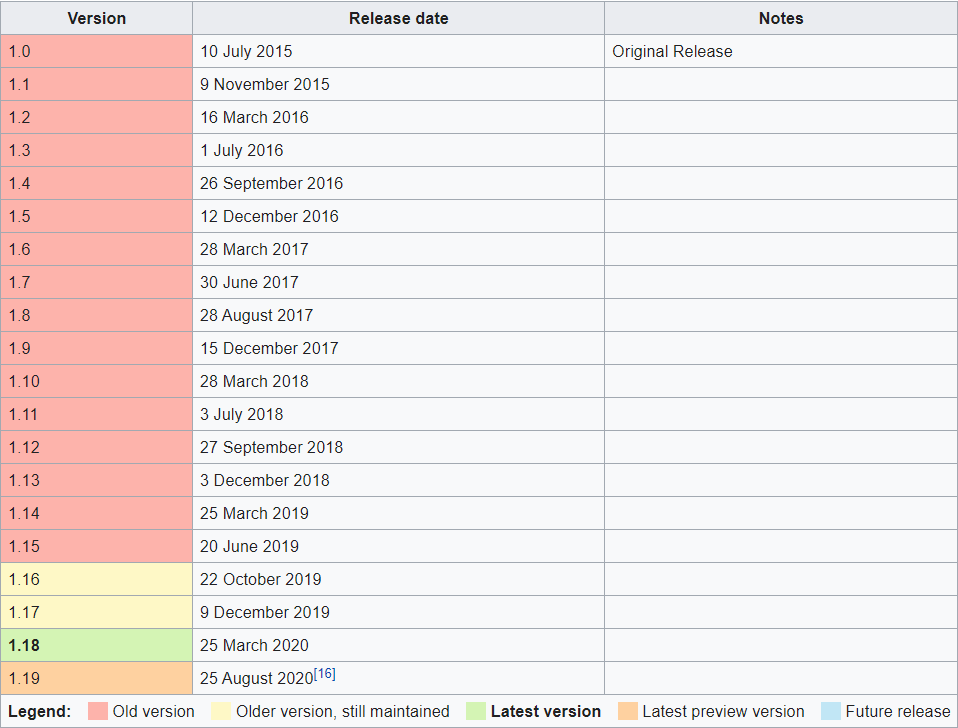According to Wikipedia It was originally designed by Google and is now maintained by the Cloud Native Computing Foundation. It aims to provide a “platform for automating deployment, scaling, and operations of application containers across clusters of hosts”. It works with a range of container tools, including Docker. Many cloud services offer a Kubernetes-based platform or infrastructure as a service (PaaS or IaaS) on which Kubernetes can be deployed as a platform-providing service. Many vendors also provide their own branded Kubernetes distributions.
Release versions

Kubernetes Objects
Kubernetes defines a set of building blocks (“primitives”), which collectively provide mechanisms that deploy, maintain, and scale applications based on CPU, memory or custom metrics. Kubernetes is loosely coupled and extensible to meet different workloads. This extensibility is provided in large part by the Kubernetes API, which is used by internal components as well as extensions and containers that run on Kubernetes.
The platform exerts its control over compute and storage resources by defining resources as Objects, which can then be managed as such.
#microservices #resources #containers #data-science #kubernetes #data analysis
